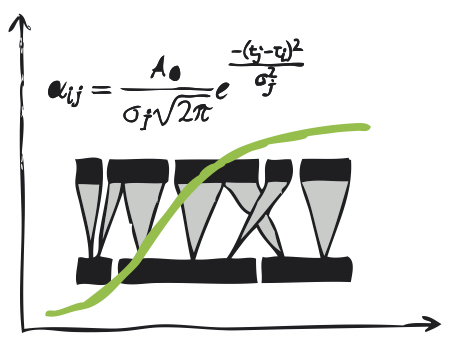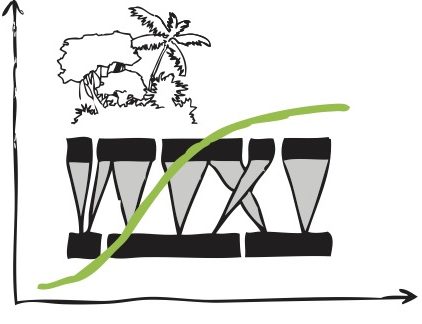Trait based theory of network reassembly
PIs: Barbara Drossel (TU Darmstadt), Carsten Dormann (U Freiburg), Maria-José Endara (U de las Américas)

Ecological networks emerge from the interactions among species. They depend on response traits that determine the environmental tolerances of a species and hence their abundance, and interaction traits, which govern the strength of interactions between species. In this project we combine simulations of species interactions with statistical analyses of observed networks to unravel the role of trait-matching and environmental tolerance for network structure and dynamics along a forest recovery gradient. Simulations allow us to strictly control response and interaction traits and investigate the resulting community dynamics. In parallel, we develop an analytical pipeline to recover the trait signals in observed interactions, and use the simulations as verification. In particular, we are interested in elucidating whether loose trait matches (“generality”) yield different network structures and dynamics than tight matches (“specialisation”), and whether changes in the environment override trait-driven network structures. Another important point is the role of interactions within the same group (guild), in particular competition (e.g. among pollinators or among herbivores). The resulting models and analyses also form a crucial toolbox for syntheses across the other sub-projects within the Research Group, and hence we will organise workshops to generalise observations and link simulations closely to the systems under investigation.
Selected references:
- Beanadi G, Dormann CF, Fründ J, Stephan R, Vazquez D (2019) Quantitative prediction of interactions in bipartite networks based on traits, relative abundances, and phylogenetic relatedness. The American Naturalist, in press.
- Bolchoun L, Drossel B, Allhoff KT (2017) Spatial topologies affect local food web structure and diversity in evolutionary metacommunities. Scientific Reports 7: 1818
- Dormann CF, Strauß R (2014) A method for detecting modules in quantitative bipartite networks. Methods in Ecology and Evolution 5: 90-98
- Dormann CF, Blüthgen N, Fründ J, Gruber B (2009) Indices, graphs and null models: Analyzing bipartite ecological networks. The Open Ecology Journal 2: 7–24
- Dormann CF, Fründ J, Schaefer HM (2017) Identifying causes of patterns in ecological networks: Opportunities and limitations. Annu. Rev. Ecol. Evol. Syst. 48: 559–584
- Hamm M, Drossel B (2017) Habitat heterogeneity hypothesis and edge effects in model metacommunities. Journal of Theoretical Biology 426: 40-48
- Rogge T, Jones D, Drossel B, Allhoff KT (2019) Interplay of spatial dynamics and local adaptation shapes species lifetime distributions and species–area relationships. Theoretical Ecology 13
- Schleuning M, Fründ J, … Blüthgen N, … Dormann CF, . . . Hof C (2016) Ecological networks are more sensitive to plant than to animal extinction under climate change. Nature Communications 7: 13965
- Thiel T, Brechtel A, Brückner, A, Heethoff, M, Drossel B (2019) The effect of reservoir-based chemical defense on predator-prey dynamics. Theoretical Ecology 12, 365-378
- Thiel T, Gaschler S, Mody K, Blüthgen N, Drossel B (2019) Impact of herbivore preference on the benefit of plant trait variability. bioRxiv, 670158

